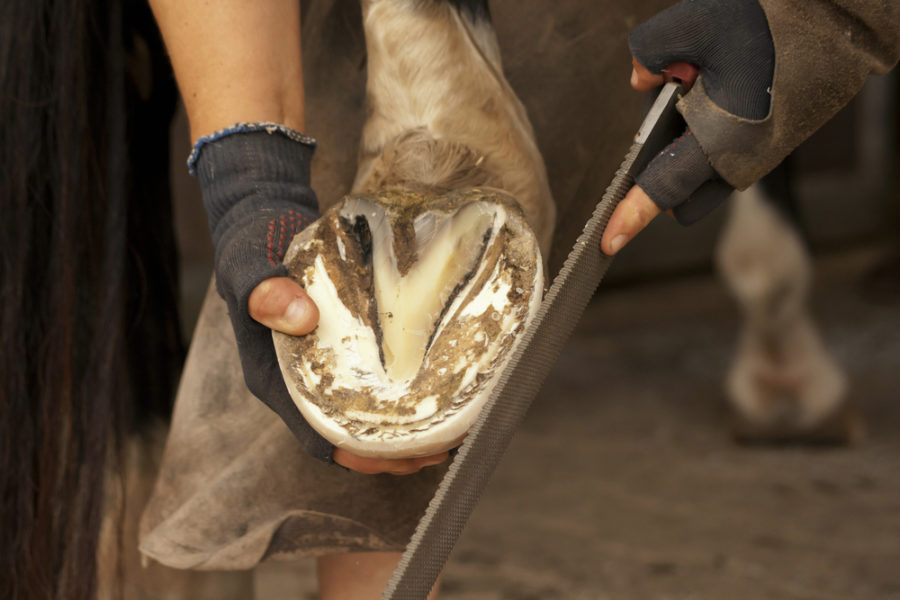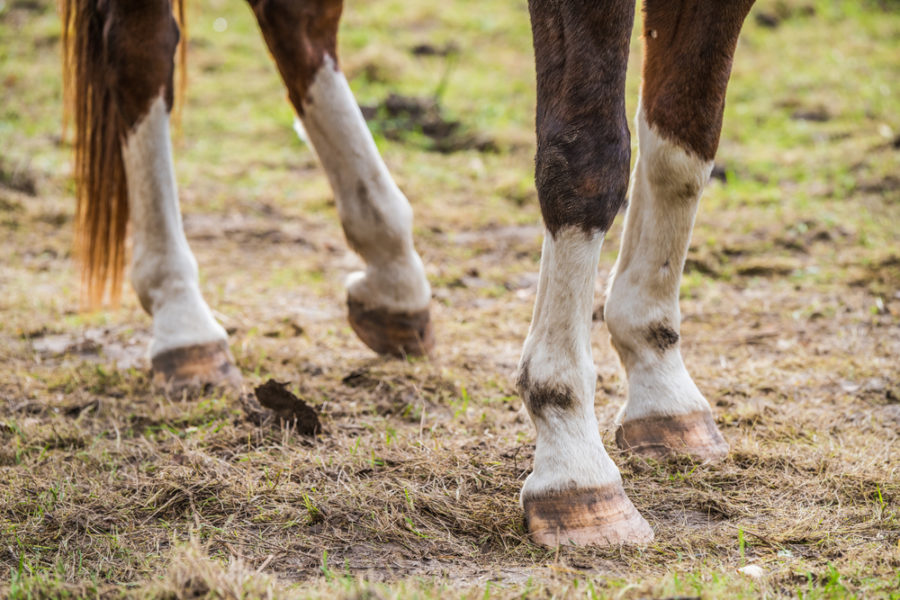Thinking of switching your horse to barefoot this season? Here’s what you should expect during the transition.
Horse caretakers often have difficulty keeping shoes on their horse. There are numerous reasons why: hoof wall damage, quarter cracks, underrun heels, and the list goes on. The obvious solution is to simply remove the shoes and allow your horse to go barefoot, as nature intended. But where do you start? What challenges will you face with your horse going barefoot? This article will assist you in moving forward on your horse’s barefoot journey, and will let you know what to expect along the way.
Be prepared for change
Going barefoot isn’t just about removing shoes – it’s a holistic approach to horse health. For some horses it may be easy, for others it will involve a longer rehab period. Your horse will be tender over hard terrain and needs time to adjust. Hoof boots will provide protection in the interim until his adapts to a new natural lifestyle.
Your horse’s hooves will be contracted, and his heels will likely be underrun from years of wearing iron nailed to the end of his hooves. The whole hoof structure has been compromised and needs to start functioning again without steel protection. Over the next six months, the hooves will change shape. The frog will be better able to perform its vital functions, which include digital cushion stimulation, blood circulation and shock absorption for the hoof capsule. The sole will also be able to start callusing as a result of ground contact. Over time, internal tissues will start to rebuild, and the hoof wall will grow and strengthen.
Most horses will successfully transition to barefoot. There is a stack of information online, along with social media groups dedicated to natural hoof care. So many equine caretakers have taken this leap of faith, and are happy to help others who want to do the same. It takes time and effort, but you will get there in the end. Don’t ever give up – your horse will benefit, and so will your pocket!
Ways to support your horse during the transition
Barefoot trims – Schedule regular barefoot trims to ensure the heel is kept low, the toe is short, the walls are bevelled and the hooves are balanced. The hoof shouldn’t be trimmed flat, in order to avoid peripheral loading, and flare should be removed to stop hoof wall distortion.
Diet – What goes into the horse, grows out! A horse needs to forage 24/7 and eat non-processed food. A good quality raw forage diet is a must with constant access to hay and free choice mineral salts.
Movement – Walk your horse over rough terrain for a minimum of ten minutes each day and, if possible, keep him in an environment that imitates a wild horse’s natural environment. It will be uncomfortable for him initially, and he may struggle over rough terrain, but don’t confine him.





